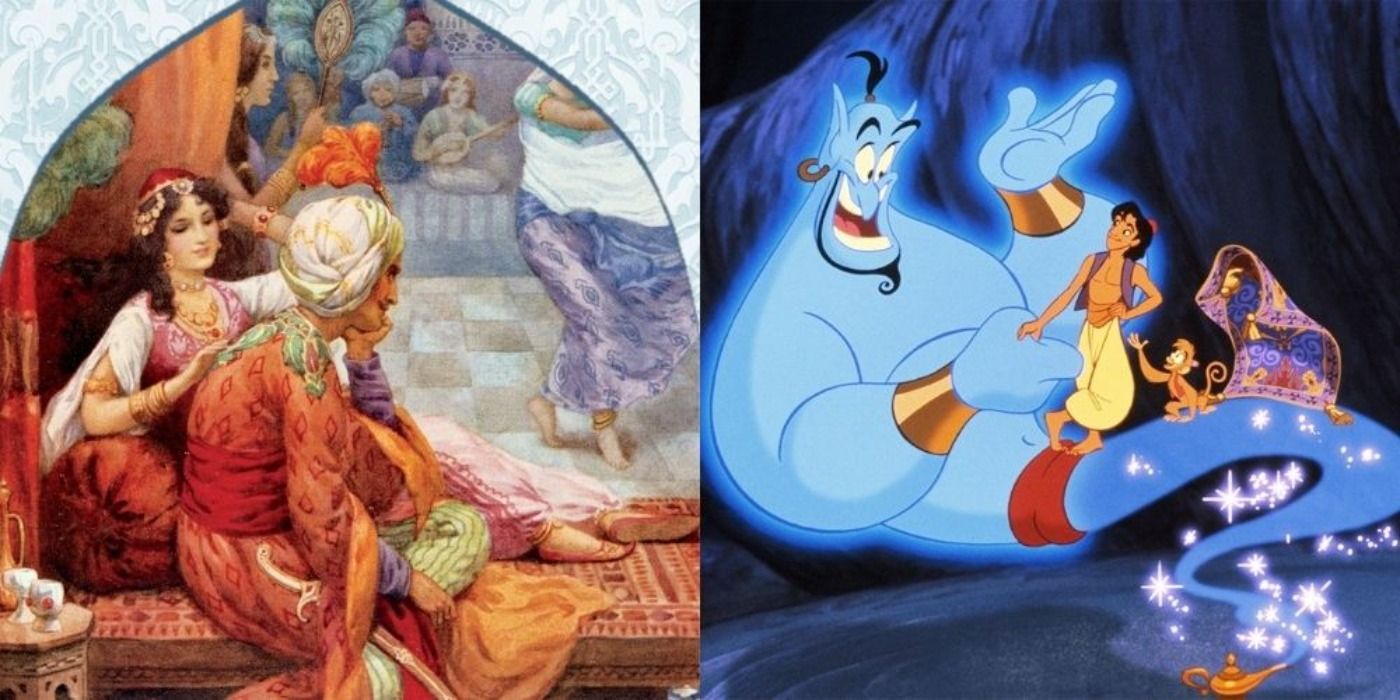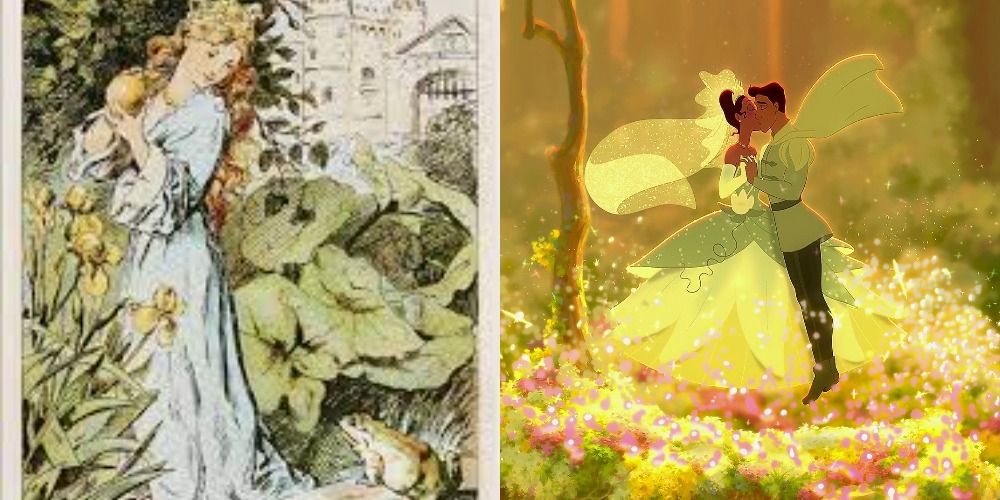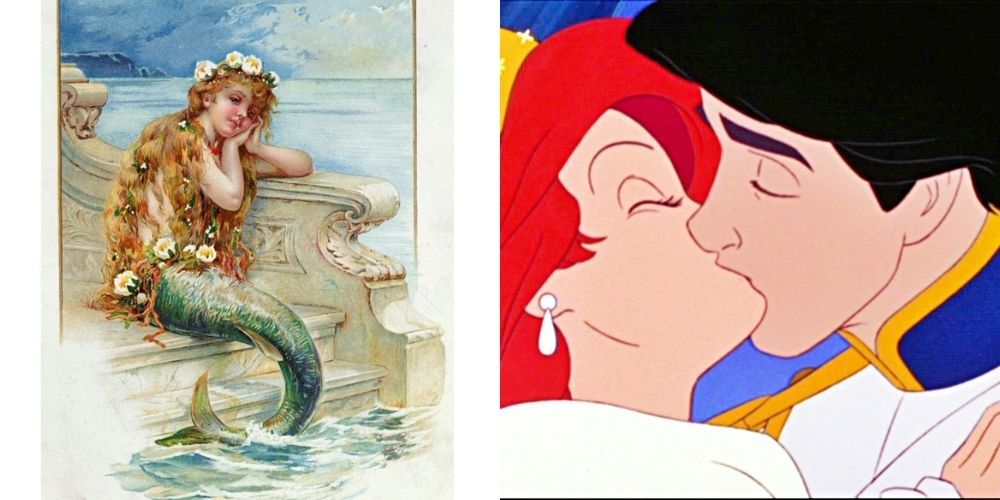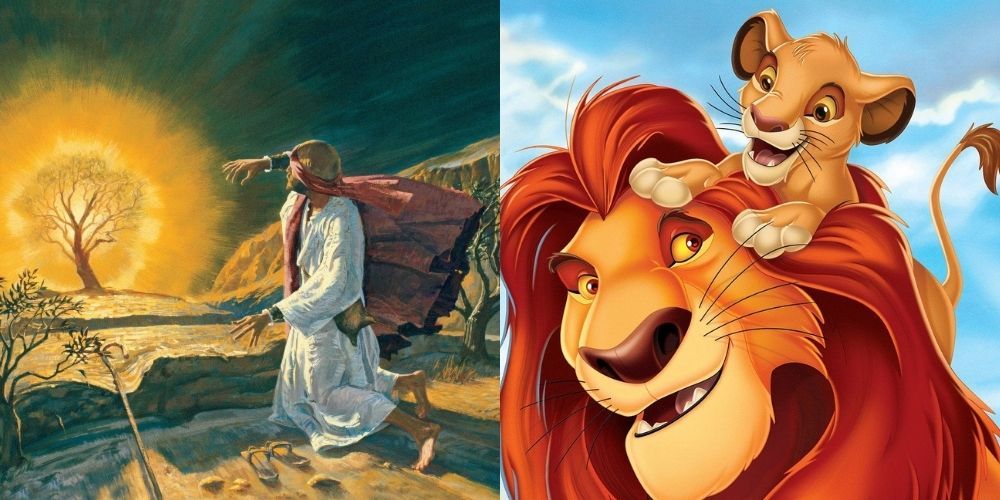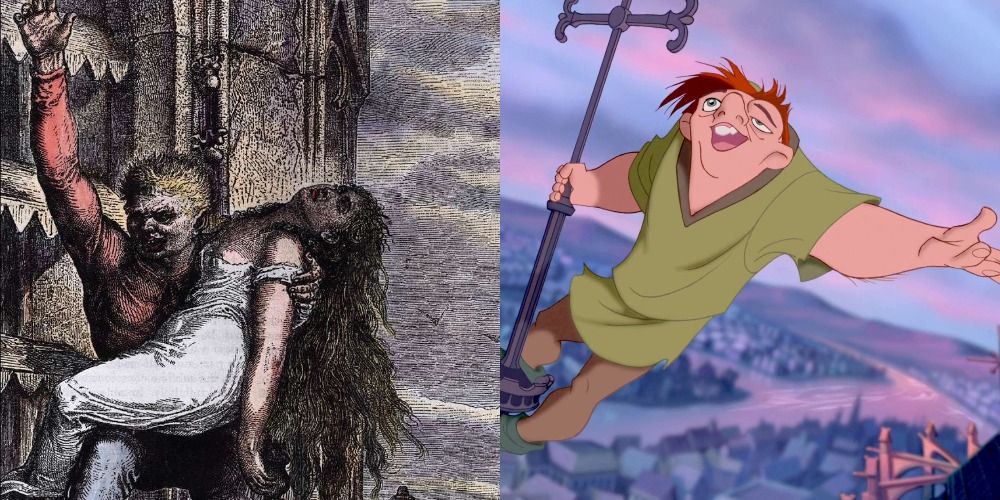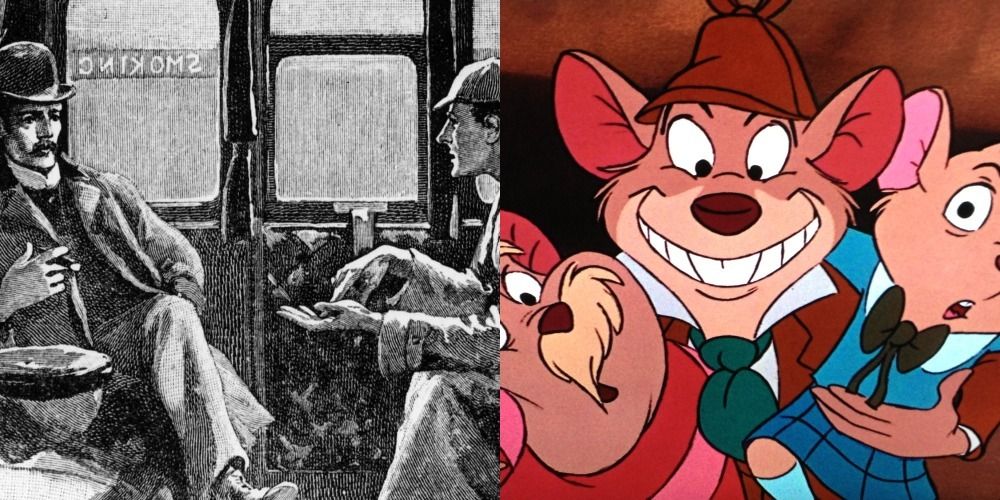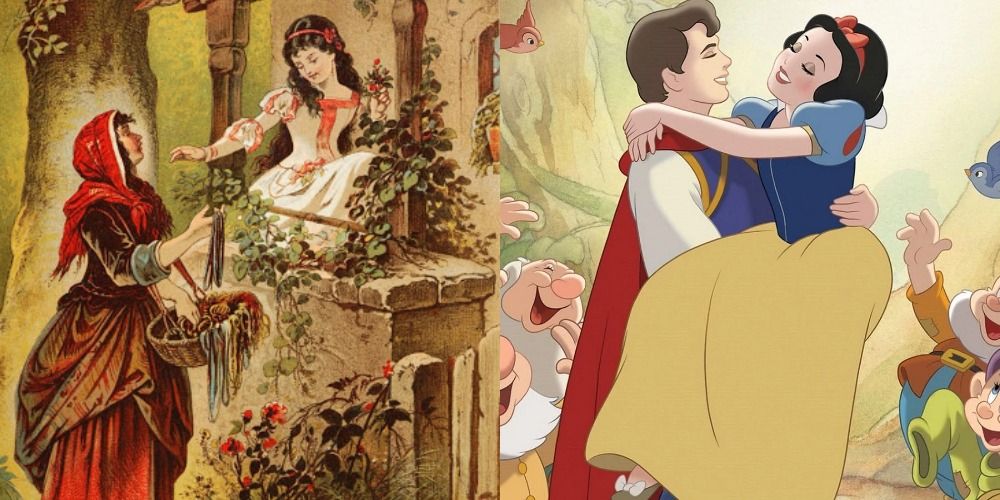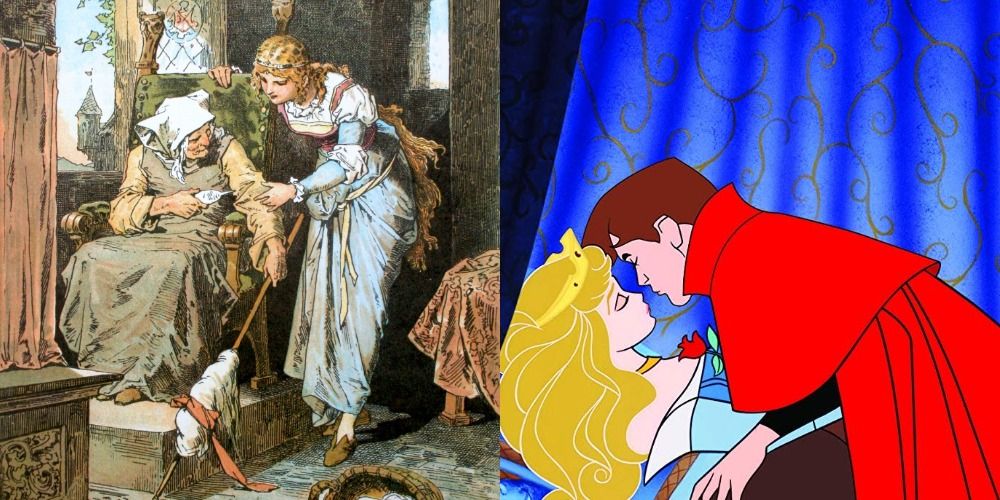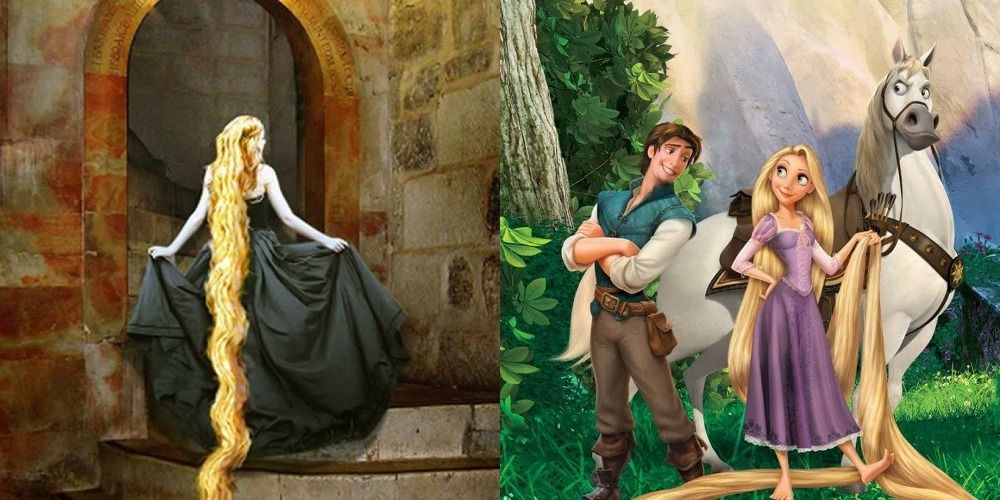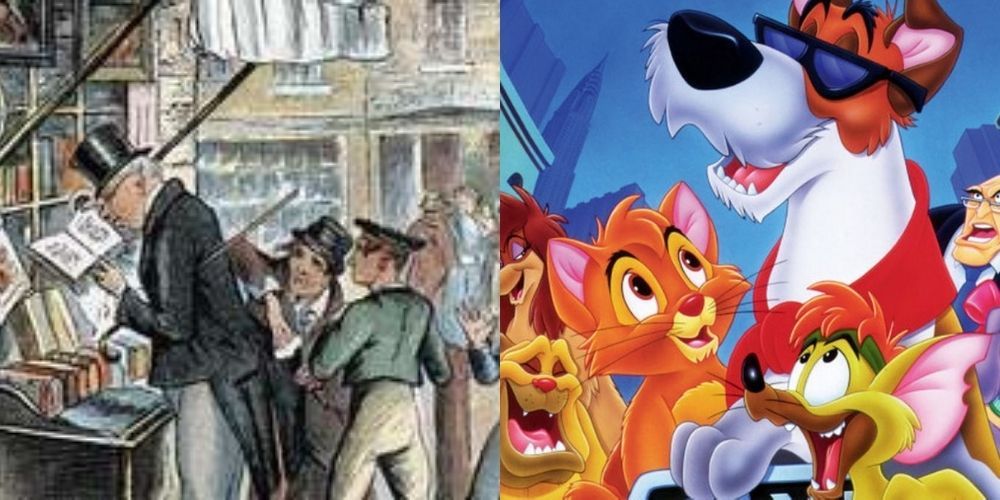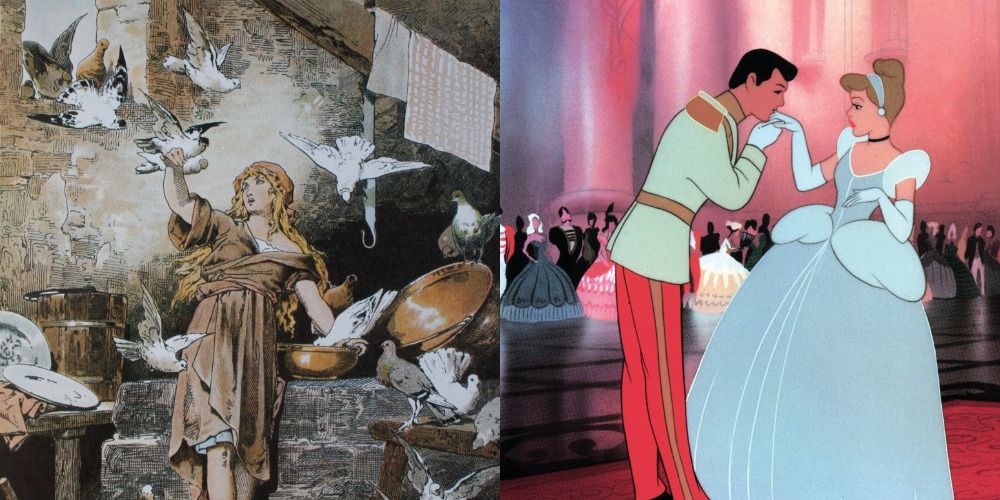Disney: adjectives galore spring to mind when we hear this famous name: sweet, adventurous, wholesome, nostalgic, magical. But what some Disney fans may not know is that many Disney shorts and feature-length films were inspired by fairytales, plays, religious texts, and other literary sources. It seems that Walt Disney did a lot of reading in his day and knew that these tales would make for some of the most adored, classic movies for audiences old and young.
And he wasn't wrong. These text-turned-flicks have motivated artists for decades to create not just movies, but fan art, fashion, and more.
The Princess And The Frog
Disney's The Princess and the Frog (2009) follows Tiana (Anika Noni Rose), a worked-to-the-bone waitress and aspiring restaurant owner in 1950's Louisiana. She kisses a price-turned-frog, Naveen (Bruno Campos), and becomes one herself. They both journey across time, swamps, and streets in a race to turn themselves back to humans -- or remain amphibians forever.
In contrast, "The Frog-Prince" or "Iron Henry," from which Disney drew inspiration, is a german fairy tale from 1812. The prince-turned-frog under a witch's curse finds the princess when she throws a golden ball into the lake he occupies, exchanging the ball for her friendship, who then reverts back to a handsome prince. Iron Henry is the Prince's loyal servant, who, upon hearing of his Prince's transformation, encased his heart in iron bands so it wouldn't break and fall apart from sadness. When he learns of the Prince's change back to royalty, it breaks -- but from happiness.
The Little Mermaid
The movie that inspired spin-offs, sequels, cosplay, and more: Disney's The Little Mermaid (1989) follows the story of Ariel (Jodi Benson) as she embarks on a quest to save her soul, literally, after making a deal with the sea witch, Ursula (Pat Carroll), to give her her perfect singing voice in exchange for becoming human. Of course, the spell can only be broken by true love's kiss, and in the end, it is, with viewers seeing a happy sea wedding between Ariel and Prince Eric (Christopher Daniel Barnes).
This flick takes its cues from both a play and a fairy tale. Unsatisfied with life, despite being incredibly successful, Faust makes a deal with the devil to give him his soul in exchange for all the knowledge and pleasures of the world. Ariel does the same but compromises her voice for love. Additionally, Hans Christian Andersen's fairy tale of the same name is essentially the same story, but with some darker elements, including murder, heartbreak and betrayal.
The Lion King
Arguably the most famous, beloved Disney film of all time, The Lion King (1992) is a tour-de-force with a literary backdrop. Fans of Shakespeare will recognize the references to The Bard's classic tragic play, Hamlet, which is the tale of a young Denmarkian prince who avenges his father's death at the hands of his uncle.
Further, the pinnacle scene where Simba sees Mufasa in the nighttime sky in the form of clouds over the Serengeti -- his father, Mufasa -- harkens back to when Hamlet sees his own ghostly apparition of his father but also references Moses in the Christian bible as he stands before God when he appears in the burning bush. Finally, the entire journey mimics Joseph Campbell's story, The Heroes Journey (as many, many other films do), which follows the arc of the hero on his journey from beginning to end.
The Hunchback Of Notre Dame
The 1996 Disney film, The Hunchback of Notre Dame, also has literary roots. Based on the gothic novel from 1831 by French author Victor Hugo, the book unfolds much the same way the film does, although some plotlines have been changed to suit child audiences and parents.
For instance, in the book, Esmerelda dies and Quasimodo, decades later, is found lying beside her in the mass grave into which she was thrown in with criminals and the poor.
The Great Mouse Detective
Perhaps one of the most underrated Disney movies in the ether, The Great Mouse Detective (1986) is a story of a mouse detective named Basil (of Baker Street), his sidekick Watson, and the adventure they go on to rescue a young mouse girl's kidnapped father from the notorious Professor Ratigan.
This Disney gem was based on the exploits of Sherlock Holmes by Sir Arthur Conan Doyle and his for-hire detective skills that focused on London's despondent and downtrodden, as well as the wealthy elite.
Snow White
1937's Snow White and the Seven Dwarfs is about a young, fair maiden, cast aside into the dangerous, dark, and deep forest by her wicked stepmother for being more beautiful than her. When a huntsman is ordered to kill her, he spares Snow White's life and she takes up residence in a small cottage with seven mining dwarfs.
The fairy tale of the same name from the Brothers Grimm unfurls much the same, only with more murderous plots-for-hire and red-hot iron slippers.
Sleeping Beauty
Disney's Sleeping Beauty from 1959 is one of the most famous peasant-turned-princess stories. Naturally, Disney took its cues from the Brothers Grimm, once again, in their fairy tale titled "Little Brier-Rose."
Absent are the three tiny fairy godmothers who look after the princess in the film version, but otherwise, much is the same, complete with a Maleficent-type villain and true love's kiss breaking the cursed spell.
Rapunzel
Disney's Tangled (2010) is based on the Brothers Grimm fairy tale, Rapunzel. It unravels in much the same way that the film does, but with some differences: Rapunzel, in the fairy tale, is a sort of lettuce leaf her mother craves during pregnancy, and the king steals it from the sorceress' garden in which it grows.
The prince also becomes blinded at one point, unlike in the movie, but has his sight restored and, like the film, he and Rapunzel live happily ever after.
Oliver And Company
Another underrated Disney flick, Oliver & Company (1988) features the story of a lost and abandoned tabby kitten named Oliver (Joey Lawrence), who joins a rough-and-tumble gang of dogs in New York City (their leader being Dodger, played by Billy Joel).
This hidden treasure is based on Charles Dickens's novel Oliver Twist or The Parish Boy's Progress, published in London in 1838. The prose follows orphan Oliver Twist, who was born in a workhouse and became an apprentice for an undertaker. Deciding to escape, he travels to London and encounters the "Artful Dodger," a member of a criminal gang led by the elderly criminal, Fagin.
Cinderella
Cinderella, Disney's classic rags-to-riches film from 1950, is one of their greatest since Snow White. The film, once again, drew its magic from the Brothers Grimm fairy tale of the same moniker (also known as "The Little Glass Slipper").
As with almost all of these fairy tales, there were some darker elements excluded from Disney's version that were present in the Brothers Grimm tale, like when the evil stepsisters mutilate their feet in order for the slipper to fit, as well as pigeons plucking out both of their eyes by the end of the tale.

